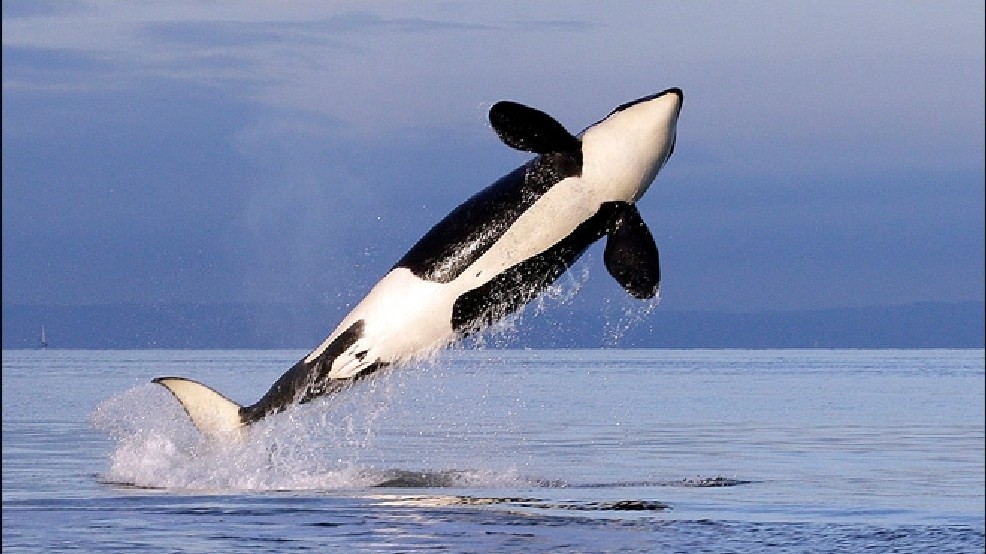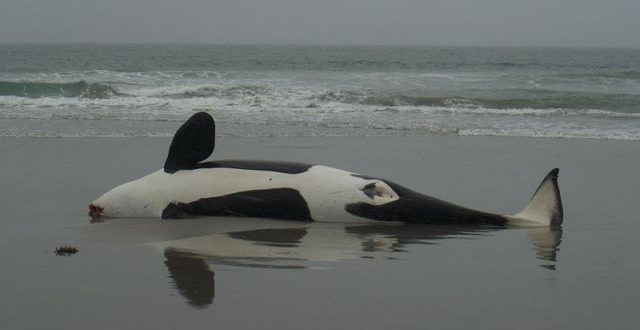Monsanto PCBs May Leave Orca Pod ‘Doomed to Extinction’
ENVIRONMENT, 15 May 2017
11 May 2017 – The Guardian reported last Tuesday [9 May] that Lulu, the full-grown whale who died,
“was a member of the UK’s last resident pod and a postmortem also showed she had never produced a calf. The pollutants, called PCBs, are known to cause infertility and these latest findings add to strong evidence that the pod is doomed to extinction.”
The levels of PCBs, or polychlorinated biphenyls, found in Lulu’s blubber were “more than 100 times the 9mg/kg limit above which damage to the health of marine mammals is known to occur” the Guardian noted. Lulu had 950mg/kg in her blubber. The average orca in the North-Atlantic ocean has 150mg/kg.
Polychlorinated biphenyls were first used in the 1930s until they were banned by the U.S. government in 1979. According to the Agency for Toxic Substances and Disease Registry (ATSDR), PCBs are synthetic organic chemicals found in “old fluorescent lighting fixtures, electrical devices or appliances containing PCB capacitors made before PCB use was stopped, old microscope oil, and old hydraulic oil.” When released into the environment, they take long periods of time to break down.
They have been found to cause damage to human health. As ATSDR notes, “Some studies in workers suggest that exposure to PCBs may also cause irritation of the nose and lungs, gastrointestinal discomfort, changes in the blood and liver, and depression and fatigue.”
The Guardian explained the effects these chemicals have on marine life, as well:
“PCBs, which cause cancers and suppress the immune system, are especially harmful to top predators because they accumulate in fat up the food chain. Killer whales can live for many decades, meaning they can end up with very high levels of PCBs.”
Though Lulu died after getting caught in ropes used for fishing, according to Andrew Brownlow, head of the Scottish Marine Animal Stranding Scheme, “Given what is known about the toxic effects of PCBs, we have to consider that such a high-pollutant burden could have been affecting her health and reproductive fitness.”
“Lulu’s apparent infertility is an ominous finding – with no new animals being born, it is now looking increasingly likely that this small group will eventually go extinct. One of the factors in this group’s apparent failure to reproduce could be their high burden of organic pollutants,” he said.
'Shocking' Levels of PCBs Found in Beloved Orca https://t.co/bKBpOe7gMt @Greenpeace @World_Wildlife
— EcoWatch (@EcoWatch) May 3, 2017
According to Monsanto’s website, the company was deeply involved in the proliferation of the chemicals:
“The former Monsanto Company produced and sold PCBs to manufacturers – such as General Electric and Westinghouse – that incorporated the fluid into their products. The former Monsanto’s PCB products bore the trade name ‘Aroclor’ (although not all Aroclor products were PCB products).
“Although the former Monsanto Company was the principal manufacturer of PCBs in the United States, its share of the global production was about 45%. There were many manufacturers in other countries, including West Germany, East Germany, Japan, France, Czechoslovakia, Spain, Italy, Poland, Russia and China. Production and use of PCBs continued in many of these countries into the 1990s.”
Though the company maintains it is not responsible for all global production, its share of nearly half the world’s PCBs is still staggeringly large. It also appears the company is leaving out some key details. According to Dr. Ellen Griffith Spears, an associate professor at the University of Alabama, Monsanto knew of the dangers of PCBs long before they discontinued their manufacture. In fact, they increased production between 1966 — when scientists first discovered their dangers — and 1977, when the company finally stopped producing them:
“During that time, Monsanto’s Ad Hoc Committee acknowledged that PCBs ‘may be a global contaminant.’ The committee even considered halting production. Significantly, however, Monsanto’s Board of Directors had responded to the news about PCB hazards by increasing production. The preferred strategy for the present, as one official scribbled in his marginal notes, was to ‘sell the hell out of them.’”
The company had also produced them in the United Kingdom, the closest country to Lulu’s environment.
Though Monsanto takes credit for voluntarily discontinuing production of PCBs before the U.S. government banned them — and other companies, like Bayer, produced them to a lesser extent — in recent years they have aggressively evaded responsibility for the effects they have had on the environment.
Though it is ultimately difficult to determine Monsanto’s exact degree of responsibility for the struggles marine animals now face as a result of human pollution, it is clear man-made chemicals propagated by massive corporations are still taking their toll.
PCBs have also been found in dolphins in the north-east Atlantic, beluga whales in Canada, and polar bears in the arctic.
“Once PCBs get into the marine environment, they are difficult if not impossible to remove,” Brownlow told the Guardian. “There are still many PCB stockpiles in Europe, and it is absolutely essential that these toxic reserves do not reach the marine environment.”
_________________________________________
Go to Original – mintpressnews.com
DISCLAIMER: The statements, views and opinions expressed in pieces republished here are solely those of the authors and do not necessarily represent those of TMS. In accordance with title 17 U.S.C. section 107, this material is distributed without profit to those who have expressed a prior interest in receiving the included information for research and educational purposes. TMS has no affiliation whatsoever with the originator of this article nor is TMS endorsed or sponsored by the originator. “GO TO ORIGINAL” links are provided as a convenience to our readers and allow for verification of authenticity. However, as originating pages are often updated by their originating host sites, the versions posted may not match the versions our readers view when clicking the “GO TO ORIGINAL” links. This site contains copyrighted material the use of which has not always been specifically authorized by the copyright owner. We are making such material available in our efforts to advance understanding of environmental, political, human rights, economic, democracy, scientific, and social justice issues, etc. We believe this constitutes a ‘fair use’ of any such copyrighted material as provided for in section 107 of the US Copyright Law. In accordance with Title 17 U.S.C. Section 107, the material on this site is distributed without profit to those who have expressed a prior interest in receiving the included information for research and educational purposes. For more information go to: http://www.law.cornell.edu/uscode/17/107.shtml. If you wish to use copyrighted material from this site for purposes of your own that go beyond ‘fair use’, you must obtain permission from the copyright owner.

